Clean air keeps machine engines and systems running longer, operators healthier, happier and more productive, and businesses more profitable.
By Austin Browne
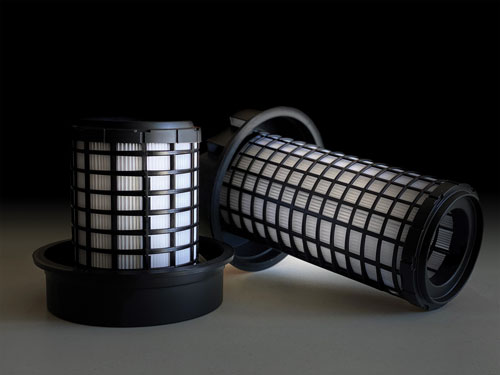
Images courtesy of Sy-Klone International.
Air filters used on heavy machinery at waste and recycling facilities serve as essential protective barriers that prevent dust, debris and other harmful particulates from reaching machine engines, HVAC systems and equipment operators. Choosing the right filters for your specific work environment is critical for sustained machine performance, operator health and productivity.
Air quality, and awareness of the contaminants in the air we breathe, have been increasingly discussed during the COVID-19 pandemic. Waste site managers, industrial health professionals and environmental safety engineers are focused on delivering solutions to protect employees working in sanitation, solid waste and recycling facilities, while keeping operations running smoothly. Solving this complex issue will require a multi-faceted approach, including updating standard operating procedures, individual employee behavior modification and systemic change. High efficiency air filtration is an important part of the solution that employers can implement today to make an immediate and long-term impact on employee health and wellness.
Waste Jobsites: The Need to Filter Out Everything … Including the Kitchen Sink
Landfills, recycling centers and indoor waste facilities have unique environmental health hazards, including potential exposure to airborne pathogens and harmful respirable particulates. On top of the occupational safety concerns, each of these environments present challenges for properly maintaining air filters.
Humidity Can Shorten Filter Life and Decrease Performance
Landfills are notoriously dusty environments. When dust combines with humidity, the filter is quickly clogged. A clogged filter can impact performance in both engine and cab filtration use cases. Engine performance can be negatively affected by clogged filters, including potential loss of power, decreased machine performance and fuel efficiency, and reduction in filter protection capabilities, allowing debris into the engine, potentially resulting in damage and costly repairs. Similarly, a clogged air filter may impact operator cabs, including, loss of cab pressurization and lack of fresh air exchange, which results in stale air and high CO2 concentrations. High vacuum pressure on the filter can cause filter seal leakage and dust infiltration in the cab. Clogged filters are a primary cause of premature HVAC failure, loss of cab pressure and high dust concentrations in the operator enclosure. Dust accumulation on the HVAC evaporator core can cause the HVAC to perform inefficiently or fail, increasing service intervals, and taking machines out of production.
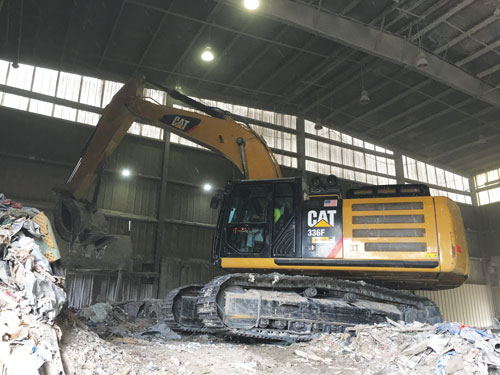
Wide Range of Particle Sizes and Types
Because of the nature of the business, landfills and waste facilities are home to a wide range of particle sizes and types of debris including small, ultra-fine respirable dust, such as diesel particulate matter (DPM) found in the exhaust of heavy equipment, organic and inorganic gasses due to off-gassing and the biological breakdown of organic waste, as well as larger chunks of trash and debris that can quickly clog filters and put machines out of service if not proactively guarded against or addressed.
Advancements in Filter Technology
Improvements in media, materials, construction and overall design have resulted in the introduction of higher quality filters into the marketplace. Know that not all filters are created equally. It is important to understand and examine multiple facets of a filter to ensure you are getting the right product for your specific needs.
To address the environmental challenges above, choose an air filter that can stand up to the demands of a waste jobsite. Evaluation criteria include:
1. Self-cleaning capabilities: Self-cleaning filters are designed so that dust and debris continuously fall off the filter throughout the normal course of operating the machine. The vibrations, bumps and movement of the machine, in addition to slight burst of backpressure created when the operator closes the door, cause the particles to fall from the filter face. Self-cleaning capabilities extend filter life and improve performance over the life of the filter.
2. Performance needs and environmental considerations: Based on specific jobsite characteristics, health and safety objectives and environmental factors, different types of filters may be used to address particulate, gas and/or odor filtration needs. Within each of these categories of filtration, different performance levels or classifications of filters exist, based on a filter’s efficiency, or ability to remove particles from the air.
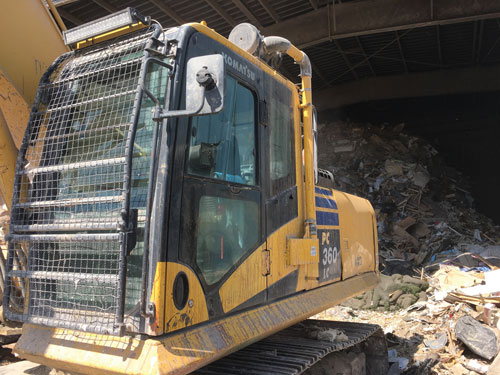
Choosing a Filter to Meet the Demands of the Waste Jobsite
When purchasing a heavy equipment air filter, assess where and how a filter will be used. Identify if the use case is for engine filtration or an operator cab fresh air/recirculation. The intended use will influence the type of filter media and filter chosen as each use case varies in performance requirements.
After identifying the tactical use, examine environmental considerations, standards and regulatory guidelines in your local, state, national or regional market. For example, depending on the work environment, some waste facilities may opt for an odor filter to remove foul odors from entering the operator cab. In some regions, there are strict regulations or standards outlining the use of a specific filter type such as a HEPA, a high efficiency particulate filter or a gas filter, such as a multi gas ABEK classified gas filter.
Buying Guide: Questions to Ask When Buying your Next Heavy Equipment Filter
Filter Media
Question(s): How will this filter be used (engine or air filter)? What type of filtration is needed (particulate, gas, and/or odor)? What level of filtration is needed? If sourcing a particle filter, examples include, but are not limited to, MERV-16 and HEPA (H13 or ISO 35 H). If sourcing a gas filter, options include varying types of gas media or a multi-gas filter such as an ABEK Filter.
Considerations: Ask the supplier if the media includes self-cleaning features to support filter life and sustained performance in extreme, dusty and humid conditions of a waste facility.
Filter Screen
Question: What type of screen does the filter feature?
Considerations: Newly introduced filters, featuring plastic screens, are lightweight and have larger spaced, open screens that improve air flow, lower restriction and reduce potential to damage media.
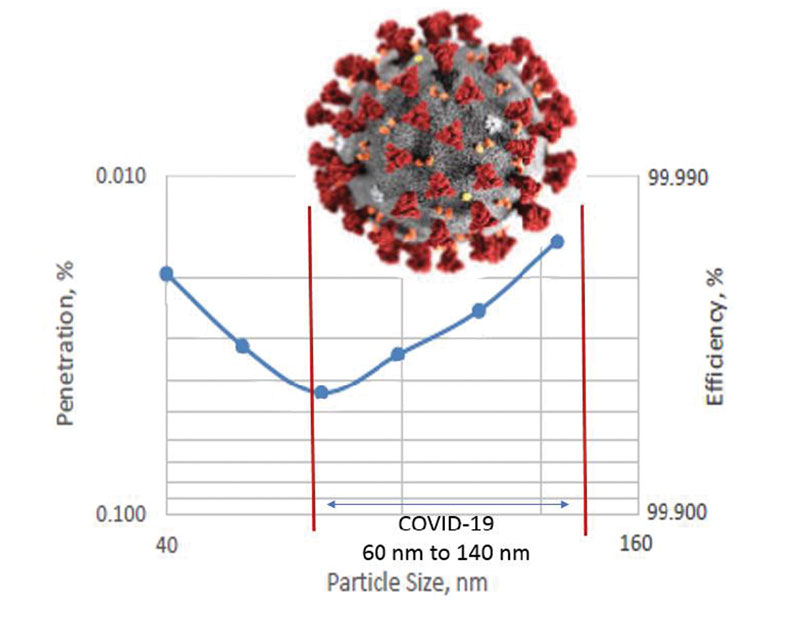
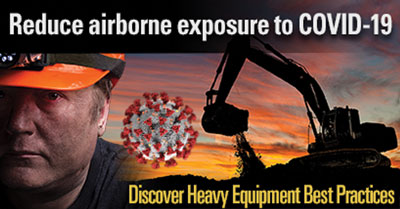
Seal Characteristics
Question(s): What type of seal does the filter feature?
Considerations: Radial seals that feature a primary and safety seal, provide the most contact area and sealing surface, ensuring that the seal is not compromised and prevents leakage from occurring. If considering a panel filter with a flat seal, careful installation and testing of seal integrity is required to ensure the filter seals as designed.
Regulatory and Environmental Guidelines:
Question: What regulations, standards or laws govern the type of filter used in this setting?
Considerations: Standards and regulations vary based on where a jobsite is located. It is important to become familiar with local, regional, national and international standards, your local/national regulations, as well as your company guidelines to determine the best option for air quality system filtration. Consideration should be given to standards such as ISO 23875 and ISO 29463 when seeking guidance in air filtration design and selection.
Filter Housing
Question: What type of filter housing is being used?
Consideration: The filter housing and presence of supporting elements, such as a pre-cleaner, is as important as the actual filter. Powered atmospheric ejective pre-cleaners integrated into self-cleaning filter housings are state-of-the-art technology. The most critical aspect of the filter is the filtration delivery system. The filter is integrated into the system, which allows it to survive waste/landfill environments without failure. By removing more than 90 percent of the particles before the filter, powered pre-cleaning significantly extends engine life, HVAC life, filter life and improves overall filter performance.
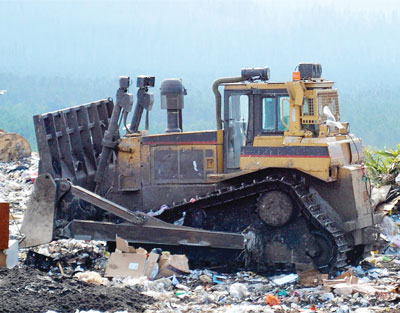
The Benefits of Air Filtration
It is important to have the right air filter for the job at hand. There are immediate and long-term benefits for choosing an air quality delivery system that supports high efficiency filtration for the extreme conditions frequently found in waste and recycling facilities.
Providing clean, fresh air for equipment operators creates a safe working environment that reduces exposure to airborne viruses and respirable particulates. Clean air supports employee health, wellness and productivity, as well as machine uptime and overall business performance.
Air Quality and Filtration Lessons Learned from COVID-19
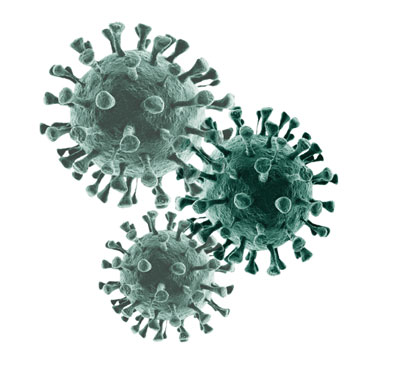 Air quality concerns have heightened since the start of the Covid-19 pandemic. Waste companies have instituted new policies, updated operating procedures and introduced new safeguards to protect frontline sanitation workers.
Air quality concerns have heightened since the start of the Covid-19 pandemic. Waste companies have instituted new policies, updated operating procedures and introduced new safeguards to protect frontline sanitation workers.
Part of the concern stems from the physical size of viruses and the ease at which they are transmitted through the air via respiratory particles. For context, the COVID-19 virus is a nanoparticle, with a physical size between 60-140 nanometers (nm). That is 100,000 times smaller than a human hair and 33,000 times smaller than a pollen particle.
In response to ongoing questions around air filter performance with regards to arresting particles the size of viruses, The International Society of Environmental Enclosure Engineers (ISEEE), the world’s leading authority on enclosure air quality engineering, released an in-depth white paper, providing recommendations on how to reduce airborne exposure to COVID-19 in operator enclosures.
In the whitepaper, ISEEE reviews how air filters are classified, how the resulting classifications can inform a buyer’s understanding of filter performance, and traditional filter classification procedures. Historically, HEPA filters, a high efficiency air filter, are classified based on their efficiency at stopping particles that are 300nm in size and larger. As a reminder, the physical size of COVID-19 virus is 60 to 140nm, much smaller than the 300nm classification criteria traditionally used to evaluate HEPA filters.
To better understand the type of filter characteristics that would reduce the airborne spread of COVID-19, ISEEE used the Most Penetrating Particle Size (MPPS) approach to evaluate filter efficiency. MPPS identifies the particle size that a filter is least efficient at removing from the air. MPPS is based on aerosol mechanics as outlined in the international standard, ISO 29463 High efficiency filters and filter media for removing particles from air.
Based on this approach to determining filter efficiency, ISEEE determined that air filters with an MPPS of 63nm are 99.95 percent effective against stopping the airborne spread of viruses the size of COVID-19. This efficiency review method indicates that filters with this performance level are capable of stopping particles 130 percent smaller than the particles size used in traditional HEPA efficiency evaluation (300nm). This information is important for understanding not only how to curb the airborne spread of COVID-19, but also, how to reduce the spread of other viruses that spread amongst worker population such as influenza, which is 80 to 120nm in size.
In addition to identifying filter performance required to arrest virus sized particles, ISEEE outlined additional jobsite best practices to reduce airborne exposure to COVID-19. To download the full whitepaper, Operator Enclosures and Covid-19, visit sy-klone.com/covid-19guide.
Austin Browne is Vice President of Marketing and Business Development for Sy-Klone International (Jacksonville, FL). He can be reached at [email protected].
Sy-Klone International is a manufacturing and technology company that creates industry-leading air filtration solutions. Sy-Klone’s customers range from heavy equipment manufacturers, to the U.S. government and international militaries, to distribution that supplies end users of heavy equipment across the globe in the most intensive, debris-laden industries. Over the decades, Sy-Klone has established a wide range of proprietary solutions that increase up time for heavy equipment engines and keep operators safe and healthy with clean air. With more than 100 patents and registered trademarks worldwide, their solutions are always evolving and Sy-Klone continues to innovate and grow, especially in the area of market-leading air quality delivery systems and advanced technology filtration for high-debris environments, to meet complex customer needs. For more information, call (904) 448-6563, ext. 1319, e-mail [email protected] or visit www.Sy-Klone.com.
